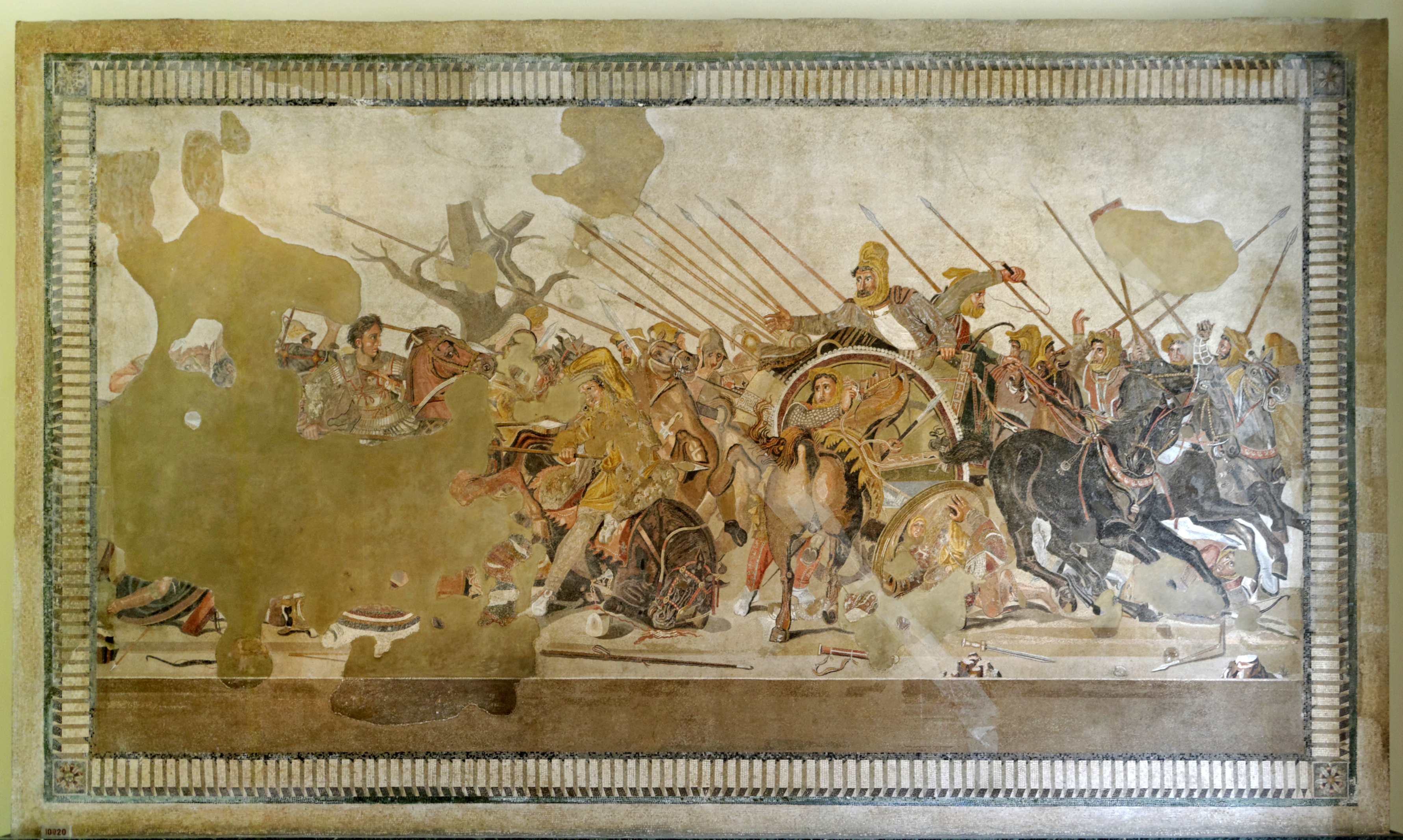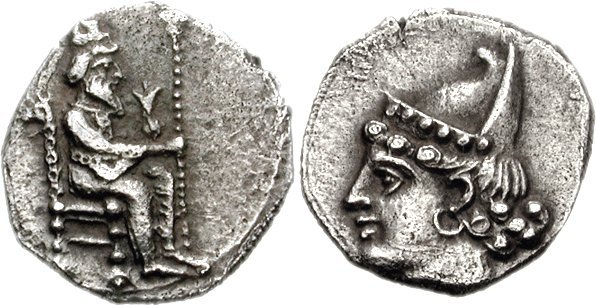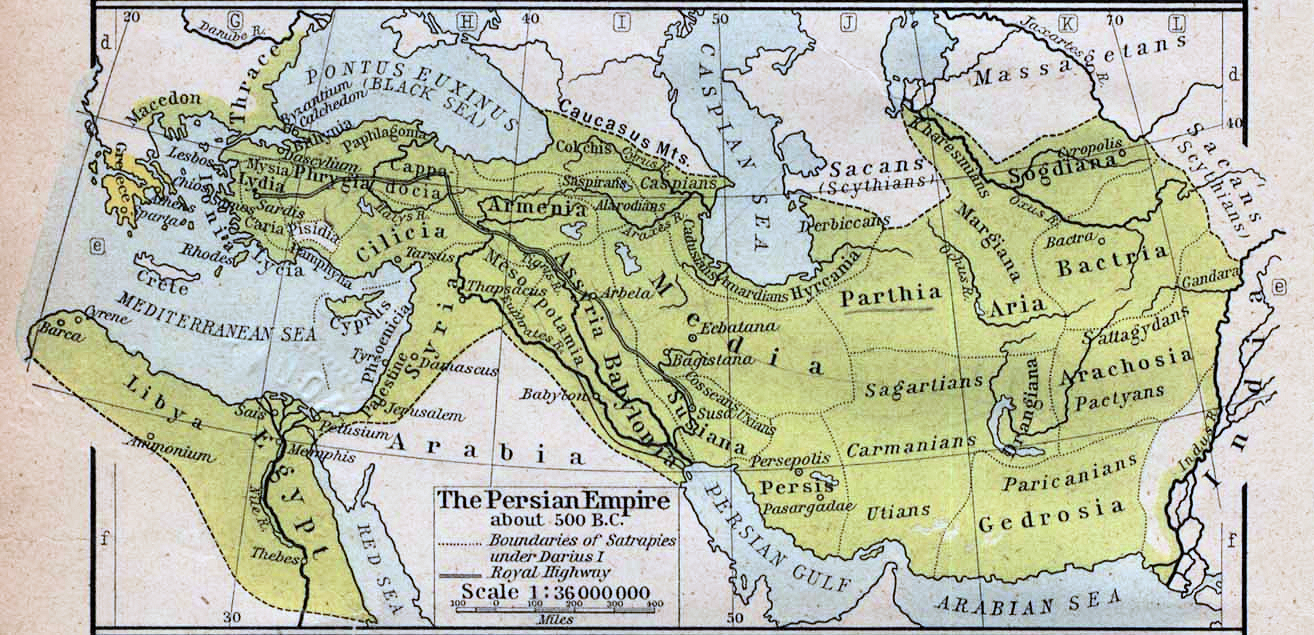|
Darius III
Darius III ( peo, 𐎭𐎠𐎼𐎹𐎺𐎢𐏁 ; grc-gre, Δαρεῖος ; c. 380 – 330 BC) was the last Achaemenid King of Kings of Persia, reigning from 336 BC to his death in 330 BC. Contrary to his predecessor Artaxerxes IV Arses, Darius was a distant member of the Achaemenid dynasty. During his early career, he was reportedly an obscure figure among his peers and first rose to prominence during the Cadusian expedition of Artaxerxes III in the 350s BC. As a reward for his bravery, he was given the Satrapy of Armenia. Around 340 BC, he was placed in charge of the royal "postal service," a high-ranking position. In 338 BC, Artaxerxes III met an abrupt end after being poisoned by the court eunuch and chiliarch (''hazahrapatish'') Bagoas, who installed his youngest son Arses on the throne. He only reigned for a few years, until Bagoas had him poisoned as well. Darius was subsequently installed on the throne and soon forced Bagoas to drink his poison after discovering that t ... [...More Info...] [...Related Items...] OR: [Wikipedia] [Google] [Baidu] |
King Of Kings
King of Kings; grc-gre, Βασιλεὺς Βασιλέων, Basileùs Basiléōn; hy, արքայից արքա, ark'ayits ark'a; sa, महाराजाधिराज, Mahārājadhirāja; ka, მეფეთ მეფე, ''Mepet mepe''; gez, ንጉሠ ነገሥት, Nəgusä Nägäst, group="n" was a ruling title employed primarily by monarchs based in the Middle East. Though most commonly associated with History of Iran, Iran (historically known as name of Iran, Persia in Western world, the West), especially the Achaemenid Empire, Achaemenid and Sasanian Empires, the title was originally introduced during the Middle Assyrian Empire by king Tukulti-Ninurta I (reigned 1233–1197 BC) and was subsequently used in a number of different kingdoms and empires, including the aforementioned Persia, various Hellenic kingdoms, History of Armenia, Armenia, History of Georgia (country), Georgia, and History of Ethiopia, Ethiopia. The title is commonly seen as equivalent to that of ... [...More Info...] [...Related Items...] OR: [Wikipedia] [Google] [Baidu] |
Artaxerxes IV
Arses ( peo, *R̥šā; grc-gre, Ἀρσής), also known by his regnal name Artaxerxes IV (; peo, 𐎠𐎼𐎫𐎧𐏁𐏂𐎠 ; grc-gre, Ἀρταξέρξης), was the twelfth Achaemenid King of Kings from 338 to 336 BC. Arses ascended the throne, after his father Artaxerxes III—who had caused a resurgence of the Persian Empire—was poisoned by the eunuch Bagoas. The latter put Arses on the throne with the expectation of being able to control him. With the weakening of the Achaemenid Empire from the assassination of Artaxerxes III and the succession of Arses, the Greek league sent troops into Asia in 336. Arses, in an attempt to free himself from Bagoas' influences, tried to have the eunuch poisoned; but did not succeed, instead succumbing to poison himself at the orders of Bagoas. Bagoas put Arses' cousin Darius III on the throne after him. Name He is known as in Greek sources and that seems to have been his real name, but the Xanthus trilingue and potsherds fro ... [...More Info...] [...Related Items...] OR: [Wikipedia] [Google] [Baidu] |
Artaxerxes III
Ochus ( grc-gre, Ὦχος ), known by his dynastic name Artaxerxes III ( peo, 𐎠𐎼𐎫𐎧𐏁𐏂𐎠 ; grc-gre, Ἀρταξέρξης), was King of Kings of the Achaemenid Empire from 359/58 to 338 BC. He was the son and successor of Artaxerxes II and his mother was Stateira. Before ascending the throne Artaxerxes was a satrap and commander of his father's army. Artaxerxes came to power after one of his brothers was executed, another committed suicide, the last murdered and his father, Artaxerxes II died. Soon after becoming king, Artaxerxes murdered all of the royal family to secure his place as king. He started two major campaigns against Egypt. The first campaign failed, and was followed up by rebellions throughout the western part of his empire. During the second, Artaxerxes finally defeated Nectanebo II, the Pharaoh of Egypt, bringing the country back into the Persian fold after six decades. In Artaxerxes' later years, Philip II of Macedon's power was increasing ... [...More Info...] [...Related Items...] OR: [Wikipedia] [Google] [Baidu] |
Cadusii
The Cadusii (also called Cadusians; grc, Καδούσιοι, ''Kadoúsioi''; Latin: ''Cadusii'') were an ancient Iranian tribe that lived in the mountains between Media and the shore of the Caspian Sea. The area that the Cadusii lived in bordered that of the Anariacae and Albani. The Dareitai and Pantimati people may have been part of the Cadusii. According to tradition, the legendary Assyrian king Ninus subdued the Cadusii. The Greek physician and historian Ctesias () was highly interested in the Cadusii, incorporating them in his invented history of an early Median dynasty. The Cadusii later voluntarily submitted to Cyrus the Great (), the first ruler of the Achaemenid Empire (550 BC–330 BC). According to Xenophon, as Cyrus was about to pass away, he appointed his younger son Tanaoxares (Bardiya) as satrap over the Medes, Armenians, and Cadusii. The Cadusii were most likely part of the satrapy of Media, and perhaps occasionally that of Hyrcania. Although they fought on side o ... [...More Info...] [...Related Items...] OR: [Wikipedia] [Google] [Baidu] |
Persia
Iran, officially the Islamic Republic of Iran, and also called Persia, is a country located in Western Asia. It is bordered by Iraq and Turkey to the west, by Azerbaijan and Armenia to the northwest, by the Caspian Sea and Turkmenistan to the north, by Afghanistan and Pakistan to the east, and by the Gulf of Oman and the Persian Gulf to the south. It covers an area of , making it the 17th-largest country. Iran has a population of 86 million, making it the 17th-most populous country in the world, and the second-largest in the Middle East. Its largest cities, in descending order, are the capital Tehran, Mashhad, Isfahan, Karaj, Shiraz, and Tabriz. The country is home to one of the world's oldest civilizations, beginning with the formation of the Elamite kingdoms in the fourth millennium BC. It was first unified by the Medes, an ancient Iranian people, in the seventh century BC, and reached its territorial height in the sixth century BC, when Cyrus the Great fou ... [...More Info...] [...Related Items...] OR: [Wikipedia] [Google] [Baidu] |
Zoroastrianism
Zoroastrianism is an Iranian religions, Iranian religion and one of the world's History of religion, oldest organized faiths, based on the teachings of the Iranian peoples, Iranian-speaking prophet Zoroaster. It has a Dualism in cosmology, dualistic cosmology of good and evil within the framework of a Monotheism, monotheistic ontology and an eschatology which predicts the ultimate conquest of evil by good. Zoroastrianism exalts an uncreated and benevolent deity of wisdom known as ''Ahura Mazda'' () as its supreme being. Historically, the unique features of Zoroastrianism, such as its monotheism, messianism, belief in Free will in theology, free will and Judgement (afterlife), judgement after death, conception of heaven, hell, Angel, angels, and Demon, demons, among other concepts, may have influenced other religious and philosophical systems, including the Abrahamic religions and Gnosticism, Southern, Eastern and Northern Buddhism, Northern Buddhism, and Ancient Greek philosoph ... [...More Info...] [...Related Items...] OR: [Wikipedia] [Google] [Baidu] |
Persepolis
, native_name_lang = , alternate_name = , image = Gate of All Nations, Persepolis.jpg , image_size = , alt = , caption = Ruins of the Gate of All Nations, Persepolis. , map = , map_type = Iran#West Asia , map_alt = , map_caption = , map_size = , altitude_m = , altitude_ref = , relief = yes , coordinates = , map_dot_label = , location = Marvdasht, Fars Province, Iran , region = , type = Settlement , part_of = , length = , width = , area = , volume = , diameter = , circumference = , height = , builder = , and , material = Limestone, mud-brick, cedar wood , built = 6th century BC , abandoned = , epochs = Achaemenid Empire , cultures = Persian , dependency_of = , occupants = , event = * Battle of the Pe ... [...More Info...] [...Related Items...] OR: [Wikipedia] [Google] [Baidu] |
Parthia
Parthia ( peo, 𐎱𐎼𐎰𐎺 ''Parθava''; xpr, 𐭐𐭓𐭕𐭅 ''Parθaw''; pal, 𐭯𐭫𐭮𐭥𐭡𐭥 ''Pahlaw'') is a historical region located in northeastern Greater Iran. It was conquered and subjugated by the empire of the Medes during the 7th century BC, was incorporated into the subsequent Achaemenid Empire under Cyrus the Great in the 6th century BC, and formed part of the Hellenistic Seleucid Empire following the 4th-century-BC conquests of Alexander the Great. The region later served as the political and cultural base of the Eastern Iranian Parni people and Arsacid dynasty, rulers of the Parthian Empire (247 BC – 224 AD). The Sasanian Empire, the last state of pre-Islamic Iran, also held the region and maintained the seven Parthian clans as part of their feudal aristocracy. Name The name "Parthia" is a continuation from Latin ', from Old Persian ', which was the Parthian language self-designator signifying "of the Parthians" who were an Iranian ... [...More Info...] [...Related Items...] OR: [Wikipedia] [Google] [Baidu] |
Sisygambis
Sisygambis (died 323 BCE) was the mother of Darius III of Persia, whose reign was ended during the wars of Alexander the Great. After she was captured by Alexander at the Battle of Issus, she became devoted to him, and Alexander referred to her as "mother". Early life She may have been the daughter of king Artaxerxes II Mnemon, or possibly of his brother Ostanes. If the latter, she married her own brother Arsames (an ancient Achaemenid tradition).. Another possibility is that she was the daughter of an Uxian leader. She gave birth to Darius, Oxyathres, and possibly also Stateira I. Alexander's invasion At the Battle of Issus (333 BCE), Darius's army was routed by Alexander the Great, and the Persian king fled the field, leaving his extended family—including his mother; his wife, Stateira I; his children; and many others—to the mercy of Alexander. He captured them but treated them with all dignity, where many a lesser conqueror would have executed them out of hand. When Ale ... [...More Info...] [...Related Items...] OR: [Wikipedia] [Google] [Baidu] |
Achaemenid Dynasty
The Achaemenid dynasty ( Old Persian: ; Persian: ; Ancient Greek: ; Latin: ) was an ancient Persian royal dynasty that ruled the Achaemenid Empire, an Iranian empire that stretched from Egypt and Southeastern Europe in the west to the Indus Valley in the east. Origins The history of the Achaemenid dynasty is mainly known through Greek historians such as Herodotus, Ctesias, and Xenophon; the Hebrew Bible and other Jewish religious texts; and native Iranian sources. According to Herodotus, the Achaemenids were a clan from the tribe of the Pasargadae and probably settled surrounding the site of Pasargadae. They possibly ruled over other Persian tribes in the 9th century BCE. Darius the Great traced his genealogy to Achaemenes, an unknown lineage named after . However, there is no evidence for a king called Achaemenes. Dynasty Kingship was hereditary within the Achaemenid dynasty. The last element of the King of King's title was always "an Achaemenid". Succession wa ... [...More Info...] [...Related Items...] OR: [Wikipedia] [Google] [Baidu] |




_p012_BAKU%2C_FIRE_TEMPLE_(cropped).jpg)


